
Background information
Tell to the stars – Switzerland in Space, Episode 1
by Martin Jud

After TELL crash landed, our students rolled up their sleeves and built a second rocket. HEIDI was born, and almost every part of her is home-made.
TELL is followed by HEIDI. Team ARIS' second rocket is built with the purpose to achieve a great result at the world's largest engineering competition for rocket construction, the Spaceport America Cup.
If you don't know about the exploded rocket TELL and would like to find out what the goals of the Swiss Academic Space Initiative (ARIS) are, you can find Episode 1 here:
Paul Prantl, born in 1993, is already one of the older members of the team. He is a master's student in mechanical engineering and joined the rocket project three months before the launch of TELL. Initially, Paul was responsible for the structure and lightweight construction of the rocket. Today he works as a system engineer and is responsible for ensuring that all interfaces and sub-projects harmonize with each other. He agreed to tell me about the HEIDI project from his personal point of view.
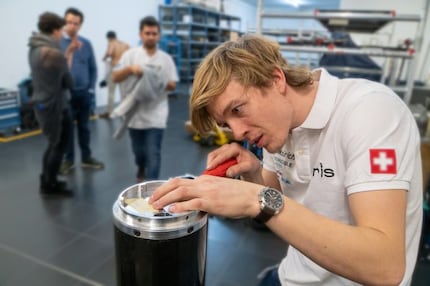
In June 2018, he didn't immediately hear about TELL's failed launch. He was enjoying the Southside Festival in Germany. Unfortunately, the mobile phone network broke down during the festival, which is why he only heard about the failure two days later:
«At first, all I felt was pity for the team. Then I wondered what must have gone wrong. Only afterwards did I mourn the beautiful rocket.»
But the students don't have to be sad for long, as TELL served as good groundwork for a second project. Paul tells me all about how the students tackled a new missile project:
«In September 2018, the ARIS team – consisting of students from ETH, HSLU and ZHAW – met for the HEIDI project for the first time. We worked out an initial concept and gave ourselves until the end of October to refine it and develop alternative designs. Then a first concept review followed; we presented our ideas to the professors and sponsors – all our partners. Representatives from Ruag Space, Sauber Aerodynamics and Maxon Motor were among those present.»
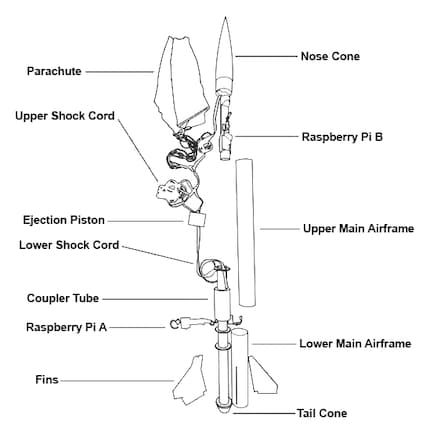
«Thanks to positive feedback for the Concept Review, we started work on a detailed design for each subsystem in November. At the start of December, the Critical Design Review followed, where CAD drawings of the rocket were already shown and discussed. After that, we were able to complete drawings on technology and designs based on the feedback. This had to be done before Christmas so that our potential sponsors could be contacted and informed in January.»
By the way, the team always builds the rocket in duplicate to be able to fall back on replacements in the worst case. The overall project also includes the development of a proprietary engine, which will see use for the first time in 2021. The total annual cost of ARIS is estimated at CHF 300,000.– This amount also includes manufactured parts and sponsored services. For example, Sauber Aerodynamics supports the project by providing the Formula 1 wind tunnel.
Parallel to looking for sponsors, implementing plans for the finished rocket will also begin in January 2019. The project is split up into specialised small groups. Everyone knows exactly what to do. Nevertheless, and despite how fun the job is, construction and programming are anything but a piece of cake. It isn't uncommon for students to work on a voluntary basis until late at night. This occurs whenever the job feels like a hobby and when the team atmosphere is very familial.
HEIDI's construction is going well – thanks to experience from the TELL project. The second ARIS rocket is completed in mid-March 2019.
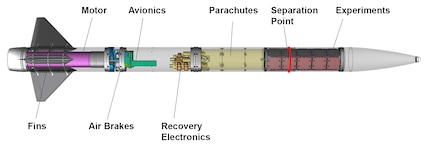
HEIDI is 278 centimetres long and has a diametre of 15 centimetres. Four kilograms of payload consisting of three experiments are included, the rocket itself weighs 24 kilograms. From the structure and fins to the air brake, controller and recovery system with two parachutes – everything, except the rocket's engine, is proprietary development.
The three fins at the very end of the rocket make use of airflow during the flight. They are an important control element that keep the rocket on course, hold it and stabilize the flight. As long as the rocket remains within the Earth's atmosphere, the Finns prevent it from drifting off its target path. In space, rockets require additional control jets for steering due to the lack of an atmosphere.
The only foreign development for the rocket is the engine, an Aerotech M2400 using solid fuel. It's meant to take HEIDI to exactly 10,000 feet (3,048 metres) together with the air brakes. The combustion time of the engine is only 3.3 seconds. The maximum expected speed is 1,000 km/h. For comparison: a Lotus Exige Cup 430 makes it to 100 km/h in 3.3 seconds.
The rocket will thus fly with ten times the acceleration of a sports car, just missing the sound barrier (1062 km/h). The maximum expected force of the engine is 3,400 Newton. That's about the same amount of force you would have to expend to keep a 340 kilogram 8-person gondola in the air. As far as acceleration is concerned, up to 11 g is expected. If you consider that a person who hasn't been specially trained can become unconscious from just 5 to 6 g, 11 g is an enormous burden. By the way, a fighter pilot has to withstand up to 9 g for a short time.
In order for the rocket to reach the predefined target altitude as precisely as possible, it needs air brakes. The air brakes are comparable to the landing flaps of an airplane. When they extend, they increase the drag of the flying object, which leads to a reduction in speed.
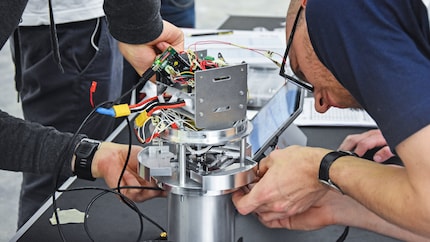
The avionics contain – apart from the recovery system – all electronics required to control the rocket. Avionics include flight control systems like the autopilot, communication systems, navigation equipment, sensors and other essential systems.
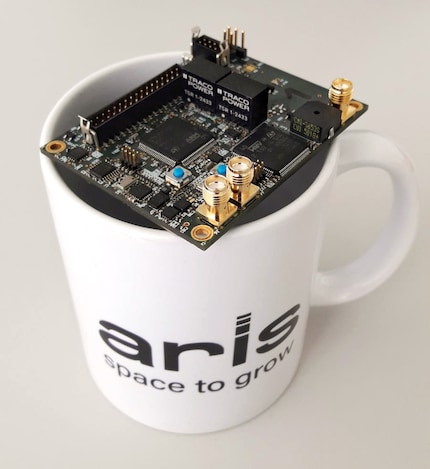
Since the rocket is supposed to be reusable, it needs a recovery system. This consists of electronic and physical components that open two parachutes at predefined times.
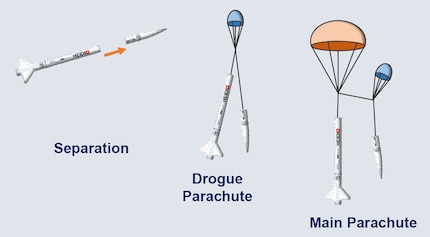
First the brake parachute opens at the apex to stabilize. Then at 400 metres the main parachute opens and brings the rocket gently to the ground. The shock force of the parachutes shouldn't be underestimated. The build must be able to withstand 1.2 kilonewtons for the brake parachute and 5.6 kilonewtons for the main parachute.
Once the rocket has reached the target altitude, it is split into two parts at the separation point to release the parachutes.
Cubesat is a worldwide standard for low cost small satellites. HEIDI has space for three such cubesats. For the Spaceport America Cup, the three spots will be filled by three experiments of high scientific value.
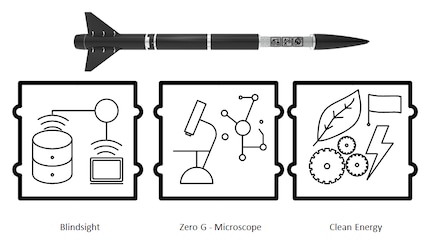
The following experiments are in progress:
I think it's great that bovine cartilage cells are also being examined inside HEIDI at around 11 g. I'd like to know more about this and the further experiments, but I have to postpone that. The focus of this story is on HEIDI. And get ready, cause the ending will be brilliant.
Fortunately, the students and Paul are more than willing to tell me everything in detail. Not knowing that I'll soon be holding back tears because of HEIDI's final flight, I lean back, throw back a gummy bear made of beef gelatine, press start on the audio recorder and listen to Paul's stories as a third act.
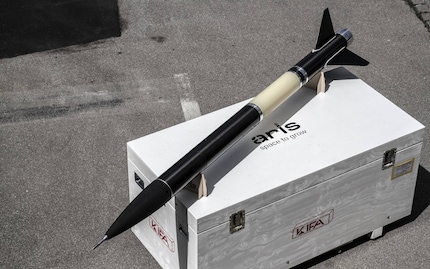
Find out how the rocket performs in the Formula 1 wind tunnel and during test flights in Episode 3. And how HEIDI provides excitement in Switzerland and radiant faces in the desert of New Mexico.
I find my muse in everything. When I don’t, I draw inspiration from daydreaming. After all, if you dream, you don’t sleep through life.
Interesting facts about products, behind-the-scenes looks at manufacturers and deep-dives on interesting people.
Show all